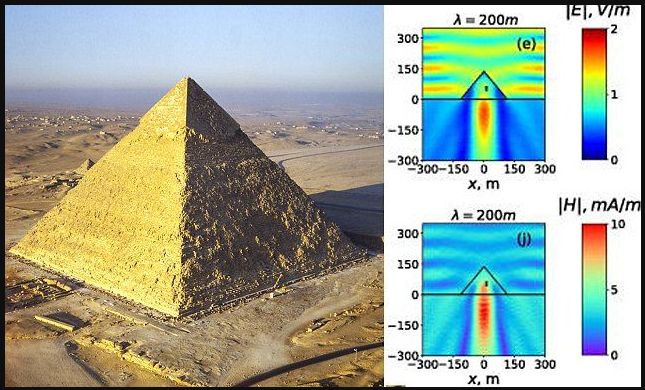CYMATICS – New Science from Sound Research
Audio Interview with Cymatics researcher Johnathan Reid about the Sound characteristics in the Great Pyramid. What he reveals amazes.
===
The Great Pyramid of Giza, also known as the Pyramid of Khufu or the Pyramid of Cheops, is a massive stone structure located on the Giza Plateau near Cairo, Egypt. While the primary focus of discussions about the Great Pyramid typically revolves around its architectural, historical, and archaeological significance, some have speculated about its potential acoustic properties. However, there is limited scientific evidence or consensus regarding the specific sound characteristics of the Great Pyramid of Giza. Here are some points to consider:
1. Echoes and Reverberation: Due to its large, enclosed interior spaces, such as the Grand Gallery and the King’s Chamber, it’s possible that the Great Pyramid could exhibit unique acoustic phenomena such as echoes and reverberation. Some researchers and visitors have reported experiencing echoes or unusual sound effects when speaking or making noises within the pyramid’s chambers.
2. Resonance and Frequencies: The dimensions and construction materials of the Great Pyramid may influence the propagation of sound waves within its interior spaces. Some theories suggest that the pyramid’s geometric proportions and stone materials could create resonance or amplify certain frequencies, although scientific studies to confirm these claims are lacking.
3. Experimental Research: While there have been anecdotal reports and speculative theories about the acoustics of the Great Pyramid, there is a lack of rigorous scientific research and empirical data on the subject. Some researchers have conducted experiments to measure acoustic properties within the pyramid’s chambers, but their findings have been inconclusive or subject to interpretation.
4. Cultural and Symbolic Significance: Regardless of its actual acoustic properties, the Great Pyramid holds immense cultural and symbolic significance as one of the Seven Wonders of the Ancient World and a symbol of ancient Egyptian civilization. Its architectural design and construction techniques continue to fascinate researchers, historians, and visitors from around the world.
In summary, while there is speculation and interest in the potential acoustic properties of the Great Pyramid of Giza, scientific research on the subject remains limited. Further studies and experiments would be needed to provide conclusive evidence and a deeper understanding of the pyramid’s sound characteristics.
===
Cymatics is a field of study that explores the relationship between sound vibrations and physical matter. It involves the visualization of sound waves through the observation of patterns formed in different mediums, such as liquids, powders, or pastes, when exposed to sound frequencies. These patterns can often resemble geometric shapes, intricate designs, or symmetrical formations.
In the context of the Giza Pyramid, there is no direct connection between cymatics and the ancient Egyptian monument. However, some individuals have speculated about the potential use of sound and resonance in the construction or function of the pyramids.
One theory posits that the ancient Egyptians may have utilized sound technology to levitate or manipulate heavy stones during the construction of the pyramids. Proponents of this idea suggest that certain frequencies or vibrations could have been employed to resonate with the stones, making them easier to move or lift. However, there is little empirical evidence to support this hypothesis, and it remains speculative.
Another area of speculation involves the acoustic properties of the pyramid chambers and passageways. Some researchers have proposed that the internal architecture of the pyramids may have been designed to amplify or resonate sound waves, possibly for ceremonial or ritual purposes. While acoustic measurements have been conducted inside the Great Pyramid of Giza, there is ongoing debate among scholars about the significance of these findings and whether they were intentional design features.
Overall, while cymatics offers fascinating insights into the effects of sound vibrations on matter, its connection to the Giza Pyramid remains largely speculative and has not been substantiated by scientific evidence or archaeological research. The construction and purpose of the pyramids continue to be subjects of intrigue and debate among historians, archaeologists, and researchers.
